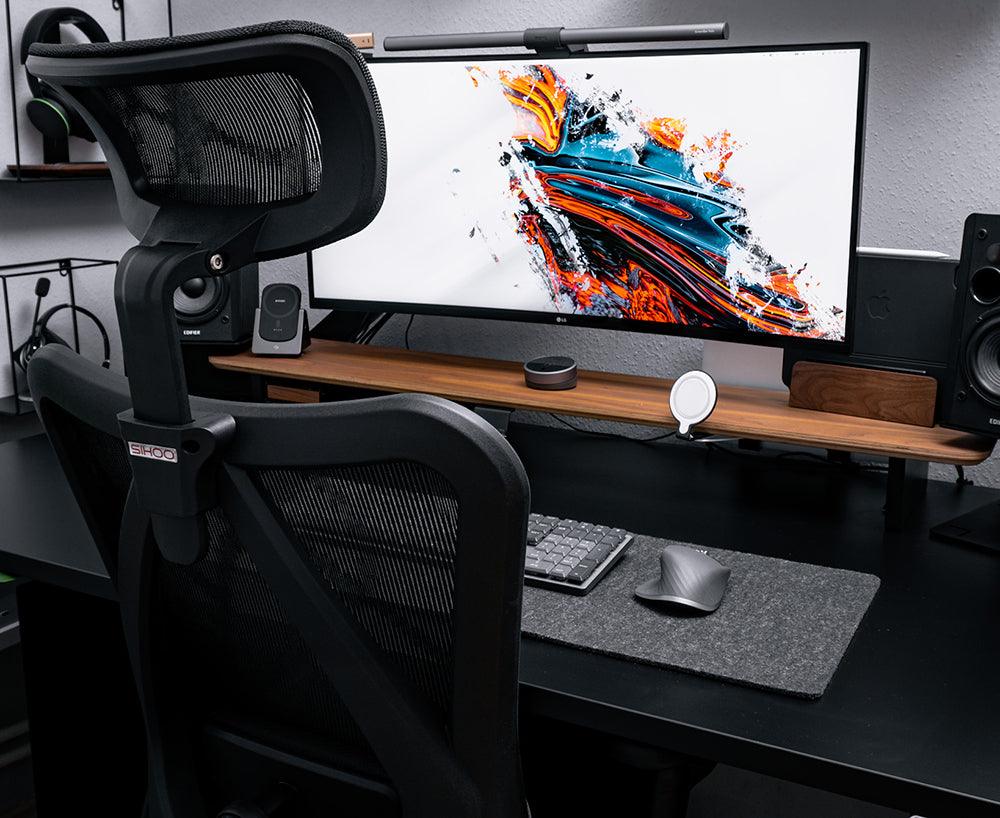The Hidden Dangers of Non-Ergonomic Office Chairs

SIHOOOffice |
Insufficient Lumbar Support:
One of the primary features lacking in non-ergonomic office chairs is proper lumbar support. The lumbar region of the spine, located in the lower back, bears much of the body's weight and is particularly vulnerable to strain and stress. Non-ergonomic chairs often lack the necessary curvature or adjustable support to maintain the natural alignment of the spine. This absence of proper lumbar support can lead to poor posture, placing excessive pressure on the lumbar discs and muscles, ultimately resulting in discomfort, stiffness, and chronic back pain.
Inadequate Adjustability:
Unlike ergonomic office chair, which offer a range of adjustable features, non-ergonomic chairs typically lack the necessary customization options. Adjustable features such as seat height, armrests, and backrest inclination are essential for accommodating individual body types and promoting proper posture. Without the ability to personalize the chair's settings to fit your body, you may end up sitting in awkward positions, straining your back muscles, and contributing to long-term spinal issues.
Incorrect Sitting Position:
Non-ergonomic chairs often encourage poor sitting habits. They may have rigid or overly soft seats, insufficient padding, or uncomfortable materials that make it challenging to maintain a correct sitting position. Prolonged sitting in a slouched or hunched position due to an uncomfortable chair can place excessive pressure on the intervertebral discs, leading to disc herniation, nerve compression, and chronic back pain. Furthermore, an incorrect sitting position can disrupt the natural spinal curves, further exacerbating discomfort and potentially causing musculoskeletal imbalances.
Reduced Blood Circulation:
Another drawback of non-ergonomic chairs is the potential restriction of blood circulation. Chairs without proper padding and inadequate seat width can compress blood vessels, impeding the flow of oxygen and nutrients to the muscles and tissues in the back. Reduced blood circulation can result in muscle fatigue, increased discomfort, and diminished productivity.
Increased Risk of Musculoskeletal Disorders:
Prolonged use of non-ergonomic chairs can contribute to the development of various musculoskeletal disorders. These may include conditions such as sciatica, herniated discs, muscle strains, and chronic back pain. In severe cases, these disorders can lead to decreased mobility, reduced quality of life, and increased healthcare costs.
Conclusion:
Investing in an ergonomic chair is crucial for maintaining good spinal health and overall well-being. Non-ergonomic office chairs lack essential features such as lumbar support, adjustability, and comfort, leading to poor posture, decreased productivity, and potential long-term spinal problems. By opting for ergonomic alternatives, individuals can significantly reduce the risk of back pain and musculoskeletal disorders, ensuring a healthier and more comfortable work environment. Prioritizing ergonomic furniture is not just a luxury; it is a necessity for safeguarding your back and optimizing your productivity in today's office landscape.


































